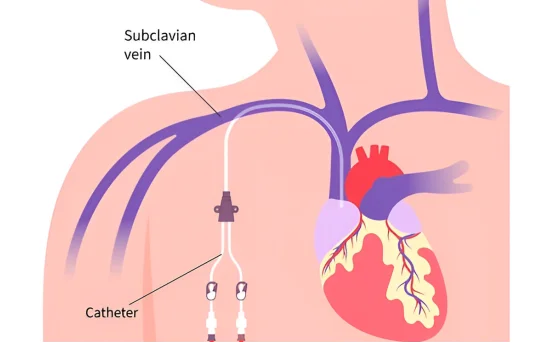Causes of bladder outlet incision surgery, often referred to as bladder neck incision (BNI) or bladder outlet obstruction (BOO) surgery, is a urological procedure performed to relieve urinary obstruction. This minimally invasive surgery helps improve the flow of urine by making small incisions in the bladder neck and/or prostate. But what exactly causes the need for this procedure?
When this blockage becomes severe or doesn’t respond to medications and other conservative treatments, doctors may recommend a procedure called bladder outlet incision surgery, also known as bladder neck incision (BNI). This minimally invasive surgical intervention is designed to relieve the obstruction by making small incisions at the bladder neck, helping to restore normal urine flow and improve quality of life.
What Is Bladder Outlet Incision Surgery?
Bladder outlet incision surgery is commonly used to treat bladder outlet obstruction, which is a blockage at the base or neck of the bladder where it empties into the urethra. When this area becomes narrowed or blocked, urine flow is restricted, leading to various symptoms such as difficulty urinating, a weak urine stream, or urinary retention.
During the procedure, a surgeon inserts a cystoscope into the urethra and uses special instruments to make one or two small cuts in the muscle at the bladder neck. This helps relieve the obstruction and restore normal urine flow.
Why Is Bladder Outlet Incision Surgery Performed?
There are several underlying medical conditions that can cause bladder outlet obstruction, making surgery necessary. Understanding these causes is crucial for timely diagnosis and appropriate treatment.
Below are the major causes that may lead to bladder outlet incision surgery :-
Benign Prostatic Hyperplasia (BPH)
One of the most common causes of bladder outlet obstruction in men is benign prostatic hyperplasia (BPH). This is a non-cancerous enlargement of the prostate gland that occurs naturally with aging. As the prostate grows, it can compress the urethra and block the normal flow of urine.
Symptoms of BPH :-
-
Weak urine stream
-
Frequent urination, especially at night
-
Difficulty starting urination
-
Feeling of incomplete bladder emptying
-
Urinary urgency
When medication doesn’t provide enough relief, bladder outlet incision surgery may be recommended to relieve the blockage and improve quality of life.
Bladder Neck Contracture or Sclerosis
Bladder neck contracture, also known as bladder neck sclerosis, refers to the narrowing of the bladder neck due to scar tissue formation. This condition often occurs as a complication after prostate surgery (e.g., prostatectomy or TURP). The scar tissue can restrict the flow of urine, leading to symptoms similar to BPH.
In such cases, bladder outlet incision surgery is used to cut the scar tissue and restore the opening between the bladder and the urethra.
Posterior Urethral Valves (PUV) in Children
In male children, posterior urethral valves are congenital obstructions in the posterior urethra. This is a rare condition that can cause significant urinary blockage and affect kidney function if left untreated.
Bladder outlet incision surgery is one of the main treatments for PUV. The incisions help remove or reduce the obstructing valves and restore normal urinary drainage.
Prostate Cancer Treatment Side Effects
Patients who undergo radiation therapy or radical prostatectomy for prostate cancer may develop complications such as urethral stricture or bladder neck contracture. This post-treatment scarring can cause significant obstruction of the urinary tract.
Bladder outlet incision surgery can be used to manage these complications and improve urinary flow in patients recovering from cancer treatment.
Trauma or Injury to the Urethra
Accidents, pelvic fractures, or catheterization-related trauma can result in urethral injury, leading to scarring and narrowing at the bladder neck or urethra. If the scarring causes a blockage in urine flow, surgical intervention may be required.
Bladder outlet incision surgery provides a less invasive option for managing these strictures, especially when located near the bladder outlet.
Neurogenic Bladder Dysfunction
Some neurological disorders, such as spinal cord injuries, multiple sclerosis, or spina bifida, can result in neurogenic bladder dysfunction. This condition affects the nerves that control the bladder and urethral sphincters, sometimes leading to bladder outlet obstruction.
In select patients, bladder outlet incision surgery may be part of the treatment plan to reduce sphincter resistance and allow easier bladder emptying.
When Is Bladder Outlet Incision Surgery Recommended?
Bladder outlet incision surgery is usually recommended when :-
-
Urinary obstruction is causing significant symptoms
-
Conservative treatments like medications or catheterization have failed
-
The patient is experiencing recurrent urinary tract infections (UTIs) due to poor bladder emptying
-
There is evidence of kidney damage or bladder damage due to back pressure from urine retention
Diagnosis Before Surgery
To determine the cause and severity of the obstruction, urologists typically conduct several diagnostic tests, such as :-
-
Uroflowmetry (measuring urine flow rate)
-
Post-void residual urine measurement
-
Cystoscopy (visual examination of the bladder and urethra)
-
Urodynamic studies
-
Imaging tests like ultrasound or MRI if necessary
These tests help confirm the presence and location of the obstruction and guide the surgical plan.
Benefits of Bladder Outlet Incision Surgery
-
Improved urine flow and reduction in urinary symptoms
-
Minimally invasive with low complication risk
-
Quick recovery time (usually same-day or short hospital stay)
-
Helps prevent long-term complications like bladder damage or kidney failure
Risks and Considerations
Although the surgery is generally safe, there are some potential risks :-
-
Bleeding or infection
-
Temporary or persistent urinary incontinence
-
Erectile dysfunction (rare)
-
Need for repeat procedures if scarring recurs
Discussing these risks with a qualified urologist is important before deciding on surgery.
Post-Surgical Recovery
Most patients recover quickly after bladder outlet incision surgery. Some key aspects of recovery include :-
-
Temporary catheter placement for 1–3 days to allow healing
-
Avoiding heavy lifting or strenuous activity for a few weeks
-
Monitoring for any signs of infection or difficulty urinating
-
Follow-up visits to assess recovery and urine flow
Conclusion
Bladder outlet incision surgery is an effective and minimally invasive treatment for various conditions that cause urinary obstruction. Whether the issue stems from enlarged prostate, scarring, congenital abnormalities, or neurological disorders, this procedure can significantly improve urinary function and overall quality of life.























